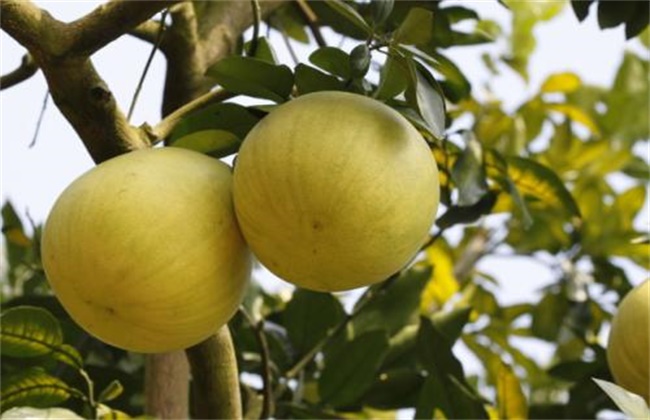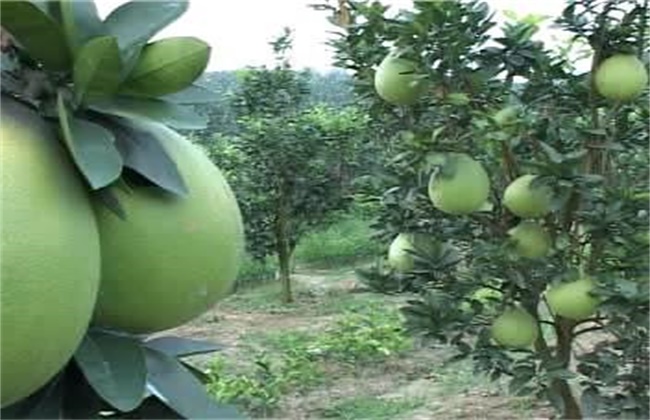Flowering management of grapefruit after rain
The flowering period of grapefruit is mostly from April to May, which is the period of heavy rainfall, which will seriously affect the quality of spring shoots, prolong flowering, affect flower quality and reduce fruit setting rate, and the yield of grapefruit will also be affected to a certain extent. So how to manage the flowering period of grapefruit after rain? Let's get to know it with the editor.

1. Fertilizing to protect leaves
The combination of soil fertilization and extra-root fertilization should apply less to the strong trees with less fruit, and more to the weak trees with more fruit, so as to balance the tree potential and avoid the occurrence of big and small years. In addition, for rainy weather, foliar spraying of alginic acid, polypeptide foliar fertilizer and boron fertilizer was carried out after rain, and humic acid water-soluble fertilizer was applied on the root to replenish nutrients in time, so as to make the plant accumulate more nutrients. To protect the old leaves, if the old leaves fall off prematurely, the development of floral organs will be seriously affected, the number of degenerated flowers will increase, and the fruit setting rate will decrease. It is necessary to improve the photosynthesis of old leaves, promote the green of new leaves, alleviate the contradiction of nutrition and reduce the phenomenon of falling flowers.
2. Prevention of diseases and insect pests
There are mainly red spiders, aphids, flower bud maggots, malignant leaf insects, sand skin disease, canker, anthrax, scab and other diseases after pomelo rain. Targeted prevention measures should be selected according to the characteristics of various diseases and insect pests. Mites can be propagated with spiromether, ethyl spirulinate, ethacarbazol and other insecticides according to local resistance; for pests such as aphids and red spiders, imidacloprid, acetamiprid and thiazide can be selected for control. While sand skin disease, anthracnose, scab and other prevention-based, can be used difenoconazole, pyrethrin, azoxystrobin and other prevention and treatment, while canker can choose copper preparation for prevention and treatment. The prevention and control of diseases and insect pests must be careful not to use a drug all the time, so as not to produce drug resistance.
3. do a good job of drainage
It is necessary to do a good job of drainage after rain to avoid stagnant water in the orchard and soak the roots. for mountain orchards, flood control ditches can be dug in the uppermost part of the orchard, along the back ditches in the planting terraces, and the drainage ditches inside and outside the orchard should be cleaned in time to avoid stagnant water after rain. On the other hand, the drainage ditches, drainage ditches and border ditches of the flat orchard should be connected with each other to form a network layout.
4. Thinning flowers and shoots
Proper flower thinning can control the unnecessary consumption of tree nutrition, make the nutrients relatively concentrated, make the flowering stage develop well and improve the fruit setting rate. Thinning flowers is first thinning inflorescences, and then thinning buds. In most buds, mung bean size is, thinning fruit mother branches, tail inflorescences, leaving 1-2 ears in the middle, buds are carried out in the size of soybeans, as well as more than 2-3 buds in the middle. Shoot thinning should remove upright and prosperous long shoots, disease and insect shoots, and cross shoots, and leave 1-2 spring shoots on the autumn shoots last year, so as to speed up spring shoots and improve stress resistance.
The above is the introduction of pomelo florescence management after rain. I hope it can help you. If you want to know more about it, please follow us.
Related
- Moge, come on! The staff of the peasant association in the producing area of cantaloupe were frightened when the crowd gathered.
- Causes and Solutions of low Fruit setting rate of Apple
- Symptoms and control measures of passion fruit virus disease
- Fruit growing lesson: how do apple orchards keep high yields?
- Can you build orchards in the mountains? What are the pros and cons?
- How to manage the coloring period of Crisson grape?
- This paper introduces the processing technology of two kinds of fig products.
- How much is a month for retired teachers in rural areas by 2020?
- How can strawberry planting increase sugar content? We should pay attention to management in many aspects.
- What are the cultivation techniques on how to improve the yield of golden fruit?



